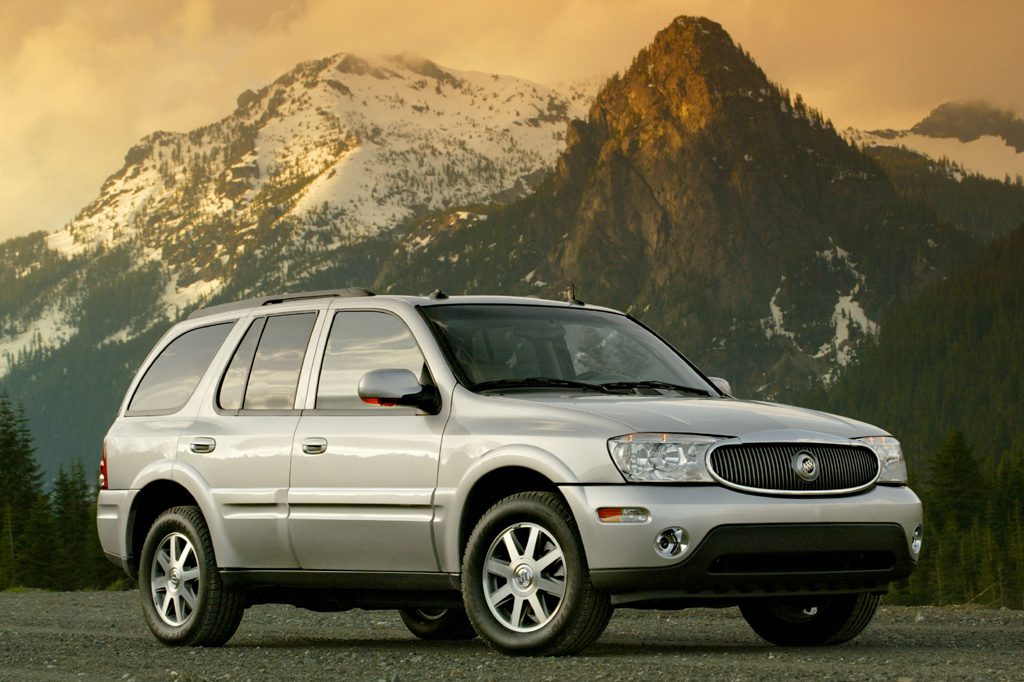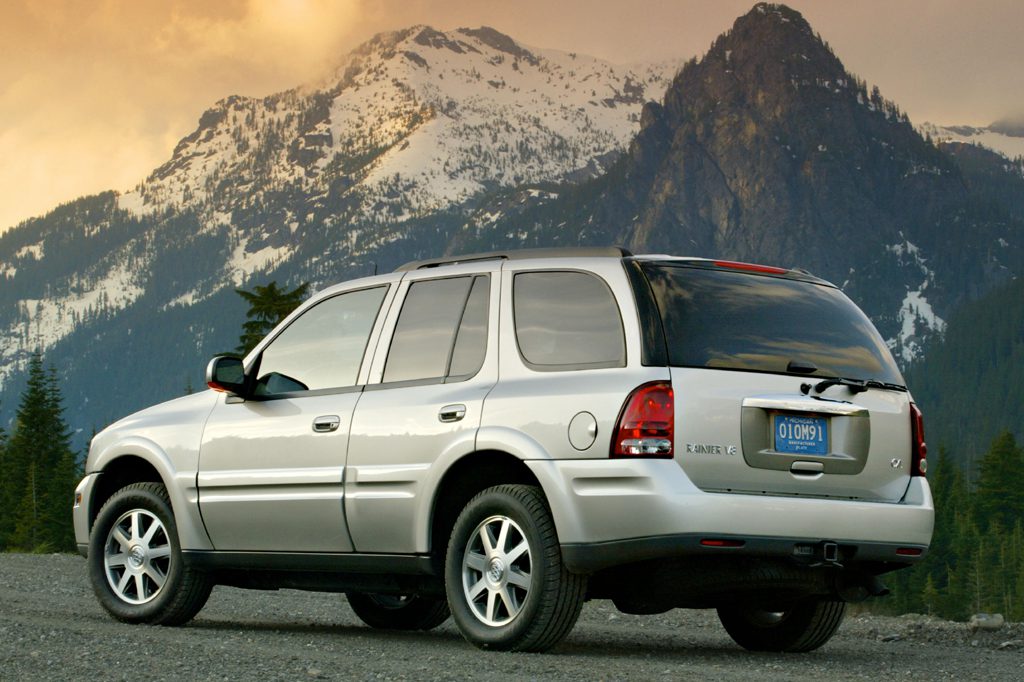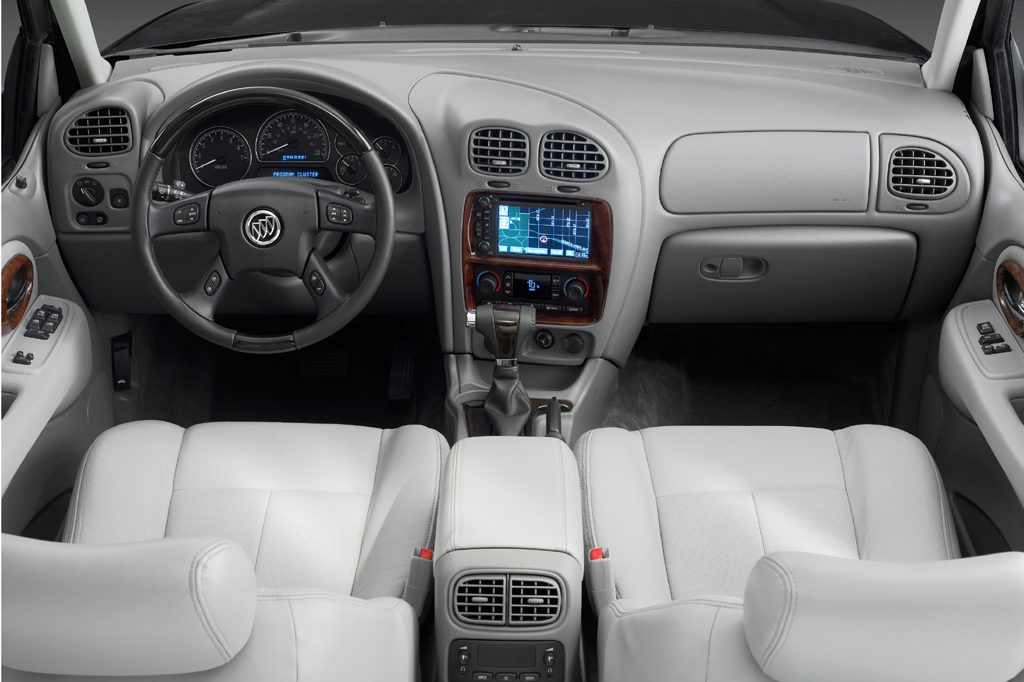| Premium midsize SUV; Built in USA |
|
|
| Good condition price range: $5,600 – $12,800* |

2005 Buick Rainier

2005 Buick Rainier

2005 Buick Rainier
| Pros: |
|
| Cons: |
|
As the Bravada retired at the end of the 2004 model year, Buick adopted its position as GM’s upscale midsize SUV. Rainier remained alone among SUVs in offering V8 power in the regular-length body, an advantage that helped it compete against luxury-oriented midsize SUVs. Still, it cannot match the best import competitors for overall refinement, materials quality, or prestige. Rainiers cost more than their GM siblings when new, and cannot escape the fault common to their noncar-based design: indifferent handling and mediocre fuel economy. On the other hand, Rainier is the quietest and best-riding of the GM bunch.
Overview
Buick added a new model for 2004: a midsize sport-utility vehicle that shared its basic design with the Chevrolet TrailBlazer, GMC Envoy, Oldsmobile Bravada, and Isuzu Ascender. TrailBlazer and Envoy offered both a 5-passenger regular-length version and 7-seat extended-length model. Rainier came only as a regular-length 5-seater.
A six-cylinder engine was standard, with V8 power optional, making Rainier GM’s only midsize regular-length SUV to offer a V8. A four-speed automatic was the sole transmission. Rainiers could have rear-wheel drive with traction control, or all-wheel drive that did not include low-range gearing.
CXL and CXL Plus trim levels were offered. Both included antilock braking, a load-leveling rear air suspension, and 17-inch alloy wheels. Also standard were leather upholstery, dual-zone climate control, and OnStar assistance. Front side airbags were optional. Curtain side airbags were not offered. Rainier was available with adjustable brake and gas pedals, heated front seats, satellite radio, a navigation system, and DVD entertainment. Competitors included the Acura MDX, Lexus RX, Lincoln Aviator, Volvo XC90, Ford Explorer, Honda Pilot, and Toyota Highlander.
Yearly Updates
| 2005 Rainier Curtain side airbags became optional for 2005, but the Rainier now came only in CXL trim. Oldsmobile became extinct as a brand before the 2005 season began, so the Bravada model disappeared. |
| 2006 Rainier An antiskid system went into 2006 Rainiers, again offered only in CXL form. GM’s new Active Management system automatically deactivated four of the engine’s cylinders under light cruising conditions, to save fuel. Curtain airbags added rollover deployment. |
| 2007 Rainier Rainier carries over unchanged. |
